FINANCE
How to Overcome Payment Complexity and Improve Cash Flow?

Smooth cash flow is critical for any business, regardless of its size or industry. When payment processes become tangled, it can lead to delayed transactions, increased operational costs, and lost revenue. Understanding the complexities that lie within payment systems is the first step toward mitigating their effects.
Several factors contribute to payment complexity, including varied payment methods, compliance issues, and developer dependencies. Read on to see how these effective strategies simplify payment procedures, improve customer experiences, and promote financial health.

Understanding Payment Complexity
Payment complexity primarily stems from the multifaceted nature of transactions. Businesses now have to navigate various payment solutions, including credit cards, bank transfers, digital wallets, and cryptocurrency. Each payment channel has its own set of rules, fees, and processing times, resulting in an intricate web that can overwhelm even seasoned finance professionals. The solution might be to leverage merchant services from Payment Nerds or any other reliable provider that focuses on your business needs, including payment options, fees, and—most importantly—compliance with local requirements. These regulations can differ not just from country to country, but from state to state. Consequently, businesses must stay updated to adhere to the latest guidelines and avoid hefty penalties. Simplifying these processes can lead to significant improvements in cash flow and customer satisfaction.
Impact of Payment Complexity on Cash Flow
The effects of payment complexity on cash flow are profound and can often go unnoticed until significant problems arise. Delayed payment processing times can be the primary cause of gaps in cash flow, causing businesses to struggle with meeting their financial obligations. When payments take longer than expected to clear, cash flow projections can easily become inaccurate and result in misguided financial planning as a result.
Each payment processing fee can eat away at the bottom line, particularly for businesses that rely heavily on specific payment methods. Unforeseeable costs can create financial strain during peak business periods. That aside, inconsistent payment experiences can frustrate customers, possibly leading them to seek alternative vendors. A negative customer experience can directly affect sales and retention, further complicating cash flow management. Thus, resolving payment complexity becomes a necessity rather than an option.
Streamlining Payment Processes
To address the challenges associated with payment complexity, businesses should focus on streamlining their payment processes. Implementing a unified payment gateway can reduce complexity by allowing customers to pay through a single interface no matter their chosen method. This creates a seamless experience for both the business and its customers, ensuring smooth transactions and quicker processing times.
Many platforms offer advanced features like automation for invoicing and payment reminders. These tools can reduce administrative burdens and minimize errors, allowing businesses to focus on their core operations. To ensure optimal cash flow, organizations should evaluate transaction fees associated with various payment methods and identify the most cost-effective solutions for their circumstances. Occasionally, renegotiating terms with providers can yield unexpectedly favorable results, helping businesses save substantially on costs.
Emphasizing Customer Experience
A significant aspect of overcoming payment complexity is enhancing the overall customer experience. In an era dominated by instant gratification, customers expect quick, easy, and secure payment options. When customers face hurdles in the payment process, it can lead to cart abandonment and lost revenue. For this reason, you want to prioritize user-friendly designs on checkout pages to satisfy customer needs. Allow for multiple payment options and ensure all transactions are secure. Customers should feel confident while making purchases, knowing their information is both safe and swiftly processed.
Offer clear instructions and readily accessible support to mitigate frustration, providing users with the guidance they need throughout their purchasing journey. Technology, such as chatbots, can be beneficial in addressing customer inquiries promptly. A refined customer experience will be sure to improve cash flow and encourage return business.
Automating Payment Solutions
Automation offers a powerful tool for overcoming payment complexity and enhancing cash flow. By incorporating automated payment systems, businesses can reduce the time and effort spent on manual processes.
Automated invoicing drastically cuts down the time required to generate and send bills. Automatic follow-ups can remind customers of pending payments, thereby shortening collection cycles. Adopting subscription models with recurring billing can ensure consistent cash inflow while minimizing manual overhead costs. This approach can effectively stabilize cash flow, making financial planning significantly easier. Select automation tools that can integrate seamlessly with existing systems for maximum efficiency. Know that automation can streamline financial operations and reduce complications down the road.
Ensuring Compliance and Security
As payment complexities grow, so does the need for stringent compliance and security measures. Complying with various regulations can be both complicated and costly, yet it’s essential for maintaining reputation and trust with customers. Businesses must keep abreast of changes in laws affecting transactions, including data protection standards and financial regulations.
Data breaches can lead to financial losses and damage trust, making it imperative to emphasize cybersecurity. Incorporating measures like encryption and tokenization enhances protection, ensuring secure transactions while maintaining customer information confidentiality. Regularly conducting audits can reveal any vulnerabilities that may exist within transaction processes. Following best practices in compliance and security safeguards businesses and establishes a foundation for improved cash flow through enhanced customer trust and loyalty.
Evaluating Payment Partners
Selecting reliable payment partners can significantly affect a business’s ability to navigate payment complexities. Organizations should conduct thorough research when partnering with financial institutions or payment service providers to ensure they align with business goals. Look for partners that offer flexible solutions, competitive processing fees, and efficient customer service.
Particular attention should be paid to customer reviews and their track records in reliability and support. Establishing partnerships with reputable providers can minimize complications and lead to smoother transactions. Businesses should also regularly reassess their partners to ensure continuous alignment with evolving needs. Leveraging the right partnerships can alleviate pressure on cash flow and support healthy operational practices at the same time.

Overcoming payment complexity improves cash flow and maintains a thriving business. By understanding the intricacies of payment systems, streamlining processes, and emphasizing customer experience, companies can foster more reliable cash inflow. Automation, compliance, and careful evaluation of payment partners all contribute to reducing the burden posed by complex payment scenarios. Adopting these strategies enhances operational efficiency and promotes financial stability.
FINANCE
The future of the dollar and inflation in the US. What to expect?

The future of the dollar and inflation in the US: what to expect for the economy in the coming years?
The American economy, one of the largest and most complex in the world, is going through a period of transformation. Over the past couple of years, inflation rates, the Federal Reserve’s monetary policy, and the strength of the dollar have been key elements in determining the economic outlook.
While 2024 has shown signs of stabilization, projections for 2025 and beyond suggest that the future of the US economy is full of uncertainties, and all this in the midst of antagonistic situations, such as the Elon Musk’s complaints that there are 150-year-olds collecting their insurance, and the increase in SSA payments in the United States reported by El Español. We will analyze the factors that will influence the US economy in the coming years, with a particular focus on the future of the dollar and inflation.
US inflation in 2024: A moderate but persistent decline
In 2024, the average inflation rate in the United States was estimated at 2.99%, which represents a reduction of 1.14 percentage points from the previous year. This slowdown was achieved thanks to a series of policy measures adopted by the Federal Reserve, such as high interest rates that sought to reduce demand in the economy.
However, the decline in inflation has not been completely linear. Despite the Fed’s efforts, inflation rebounded to 2.7% in November 2024, which contrasts with the minimum of 2.4% observed in August of the same year.
Although the outlook for 2025 suggests a further decline in inflation, with estimates putting the rate at around 2.1%, signs of complete control over prices still seem distant.
The Underlying Inflation Rate, which excludes the most volatile prices of food and energy, remained at 3.3% for three consecutive months, reflecting the resistance of certain sectors of the economy to the slowdown in prices.
Inflation projections for 2025 and beyond
According to the most recent data from the Federal Reserve, inflation could rebound to 3.7% in the coming months, a figure that could delay the process of normalizing interest rates that the Fed had projected for the end of 2024. This is because controlling inflation in key sectors such as housing, healthcare and services has proven more difficult than expected.
In 2025, inflation is expected to decline further, reaching around 2.1%. However, unpredictable factors, such as the impact of government fiscal policies and global geopolitical tensions, could alter this forecast.
The impact of fiscal policy: Trump’s agenda and its consequences
In the analysis of future inflation, one of the factors that could have a significant impact is fiscal policy. Donald Trump’s proposals include higher tariffs, immigration restrictions, tax cuts and reduced business regulation.
These measures could generate additional inflationary pressures, especially as the cost of imports and wages increase in response to a tighter labor market.
Although short-term inflation projections remain relatively stable, it is expected that the uncertainty generated by fiscal policies could generate unexpected adjustments in inflation expectations. In this context, the two-year inflation outlook (Breakeven Inflation Rate) increased to 2.5%, compared to 1.8% observed in September 2024.
Consumer Spending: Driver of the US Economy
Consumption accounts for about 70% of the U.S. economy, making consumer spending an important indicator for the country’s economic health. Retail sales, which make up about a third of total spending, are a direct reflection of trends in consumption.
Employment data remains positive, with the unemployment rate at 4% and continued growth in average hourly earnings. This data suggests that the economy continues to operate relatively stably, although consumer spending could take a hit if inflation persists and commodity costs rise significantly.
Contradictions in economic growth projections
One of the biggest near-term challenges for the US economy will be Gross Domestic Product (GDP) growth. The Atlanta Federal Reserve has forecast a contraction in US GDP of 2.8% in the first quarter of 2025.
This would indicate that the economy could face a steeper slowdown than expected, which would affect market confidence and could put additional pressure on the Fed’s monetary policies.
A possible recession or economic slowdown could lead the Federal Reserve to reevaluate its approach to interest rates and fighting inflation, which could contribute to a rebound in inflation levels in the near term.
The relationship between economic growth and inflation is complex, and a decline in economic growth could lead to a slowdown in inflation, while at the same time increasing pressures on employment and wages.
The future of the dollar: Challenges and opportunities
The US dollar has shown remarkable resilience despite inflationary and economic challenges. However, persistent inflation and expansionary fiscal policies could have an impact on the dollar’s strength in the long term.
If inflation remains above the Federal Reserve’s expectations and interest rates tighten, there could be additional pressure on the value of the dollar against other foreign currencies.
Despite potential inflationary pressures, the dollar remains a global safe-haven currency, meaning it is likely to continue to be in demand during times of global economic uncertainty.
What to expect from the US economic future?
As we move into 2025 and beyond, the U.S. economy faces a number of challenges and opportunities. Inflation, although more controlled than in previous years, remains a key concern, with the potential for it to rebound due to both internal and external factors.
While the GDP contraction in the first quarter of 2025 is a sign of caution, consumption remains a key driver of the economy, which could help avoid a deep recession. The future of the dollar will depend on the interaction between monetary policy, global conditions and inflation expectations. Families, consumers and investors must prepare for a dynamic economic environment, with both risks and opportunities.
FINANCE
How to Get Tax Debt Relief

If you’re struggling with tax debt, you’re not alone. Many Americans find themselves behind on their taxes at some point, facing not just a financial burden but also stress and uncertainty about the future. The good news is that there are options available that can provide relief and a path forward. Understanding those options and determining the best course of action can be the first step toward resolving tax debt challenges. In this article, we’ll explore the avenues you can take to seek tax debt relief and regain control of your financial situation.
Evaluating Eligibility for Tax Debt Relief Programs
Before applying for any tax debt relief program, it’s vital to evaluate your eligibility. The IRS has strict criteria for each of its programs, and not everyone will qualify. For example, some programs require you to have filed all your tax returns and to have made all required estimated tax payments for the current year.
One common initiative for individuals is the IRS Fresh Start program, which makes it easier for taxpayers to pay back taxes and avoid tax liens. This includes options such as extended installment agreements and Offer in Compromise (OIC) agreements. Qualification for these programs often depends on your income, expenses, asset equity, and ability to pay.
Due diligence in gathering your financial information is a must. Accurate records of your income, debts, expenses, and asset values are imperative when submitting an application for a relief program. In some cases, this process can be complex, requiring a thorough understanding of tax laws and financial analysis.
The Role of the IRS Offer in Compromise
The IRS OIC program allows qualified individuals with an unpaid tax debt to negotiate a settled amount that is less than the total owed to clear the debt. It’s designed for taxpayers who cannot pay their full tax liability or doing so creates a financial hardship. OIC provides a fresh start by reducing the overall burden of debt.
Not everyone is eligible for an OIC, and the process of applying can be complex and time-consuming. The IRS takes into account your ability to pay, income, living expenses, and asset equity before making a decision. They typically approve an OIC if they believe the offer is the most they can expect to collect within a reasonable period of time.
It’s worth noting that even if your offer is rejected, you have the right to appeal the decision. When considering an OIC, it’s crucial to be realistic about the amount you offer. Making an offer that accurately reflects your financial capabilities increases the chances of acceptance.
Navigating Installment Agreements for Tax Debt Repayment
For taxpayers unable to pay their tax debt in full, the IRS offers installment agreements as a way to pay over time. This is a plan where you make monthly payments towards your debt. There are different types of installment agreements, and the one that’s best for you depends on the amount you owe and your current financial situation.
One of the more accessible options is the streamlined installment agreement, which is generally available to individuals who owe $50,000 or less and can pay their debt in full within six years. It has fewer requirements and doesn’t necessitate a full financial disclosure to the IRS.
More complex installment agreements, such as the partial pay installment agreement, allow taxpayers to make monthly payments based on what they can afford after accounting for essential living expenses. These require a detailed financial statement and can be more difficult to negotiate.
Seeking Professional Help for Tax Debt Resolution
Dealing with tax debt can be overwhelming, and in many cases, it’s beneficial to seek professional assistance. Tax professionals, such as CPAs, tax attorneys, and enrolled agents, have the expertise required to navigate complex tax laws and negotiate with the IRS on your behalf.
A trusted tax advisor can help you understand your options, prepare documentation, and represent you in communications with the IRS. Their guidance can be invaluable in setting up installment agreements, submitting an Offer in Compromise, or even applying for penalty abatement.
Finding the right help is key. Look for certified professionals with experience in tax resolution, and check their credentials and track record. Remember, while professionals can provide assistance, they should never guarantee specific outcomes, especially before reviewing your unique situation in detail.
Overall, while tax debt can be a daunting issue, there are practical steps and resources available to help you regain financial stability. By understanding your options, evaluating your eligibility, and possibly seeking professional assistance, you can navigate the complexities of tax debt relief and work towards a brighter financial future.
FINANCE
How Much Can You Work While Collecting SSDI? A Guide to Earning and Benefits

If you’re receiving Social Security Disability Insurance (SSDI), you might be wondering how much you can work without jeopardizing your benefits. Understanding the balance between work and SSDI benefits can be crucial in ensuring you maintain your financial stability while also complying with Social Security Administration (SSA) rules. Let’s discuss how SSDI works, how you can qualify for benefits, and the max earnings for Social Security disability.
Qualifying for Your SSDI Benefit
To qualify for SSDI, you need to have worked and paid Social Security taxes for a specific amount of time based on your age when you become disabled. The SSA uses a system called “work credits,” which are earned through your employment history. Generally, you need 40 credits, 20 of which must have been earned in the last 10 years, to qualify for SSDI benefits. However, the number of credits required can vary based on your age and when your disability occurs.
In 2024, the Social Security Administration (SSA) defines Substantial Gainful Activity (SGA) as earning more than $1,550 per month for non-blind individuals and $2,590 per month for those who are blind. Earning above these thresholds may render you ineligible for disability benefits.
The SSA offers a Trial Work Period (TWP) allowing beneficiaries to test their ability to work without immediately losing benefits. In 2024, any month in which you earn more than $1,110 counts as a TWP month. During the TWP, you can receive full benefits regardless of earnings.
After the TWP, the SSA evaluates your earnings to determine continued eligibility. If your earnings exceed the SGA limit, your benefits may cease after a grace period. It’s crucial to report all work activity and earnings to the SSA to avoid overpayments and ensure compliance with program rules.
Working and Collecting Your SSDI Benefits
One of the key programs that allows SSDI beneficiaries to return to work is the Trial Work Period (TWP). This period allows you to test your ability to work for up to nine months without losing your SSDI benefits, regardless of how much you earn. During this time, you can work and earn any amount, and your SSDI payments will continue. However, after the TWP ends, you will enter what’s called the “Extended Period of Eligibility” (EPE).
Need Legal Assistance with the Max Earnings for Social Security Disability?
If you are unsure whether your job or income might affect your SSDI benefits, it’s a good idea to consult with a legal expert. An experienced attorney or benefits claim advisor can help you understand the nuances of SSDI work rules and ensure you are maximizing your benefits while staying compliant with SSA regulations. Contact one today to learn more about the max earnings for Social Security disability.

 Cartoon1 year ago
Cartoon1 year agoUnlocking the Potential of Nekopoi.care: A Comprehensive Guide

 Game1 year ago
Game1 year agoExploring Aopickleballthietke.com: Your Ultimate Pickleball Destination

 BUSINESS1 year ago
BUSINESS1 year agoWhat Companies Are In The Consumer Services Field

 BUSINESS11 months ago
BUSINESS11 months agoUnraveling the Mystery of 405 Howard Street San Francisco charge on Credit Card

 HOME IMPROVEMENT1 year ago
HOME IMPROVEMENT1 year agoVtrahe vs. Other Platforms: Which One Reigns Supreme?

 TECHNOLOGY12 months ago
TECHNOLOGY12 months agoThe Guide to Using Anon Vault for Secure Data Storage

 ENTERTAINMENT8 months ago
ENTERTAINMENT8 months agoUnderstanding Bunkr Album: A Comprehensive Guide

 ENTERTAINMENT1 year ago
ENTERTAINMENT1 year agoThe Epic Return: Revenge of the Iron-Blooded Sword Hound
















